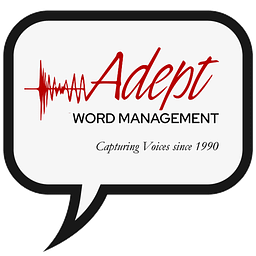By Pat and Stewart on February 10, 2025
Q: The act of clinking glasses and saying “cheers” is becoming known as “cheersing.” Well, there wasn’t already a word for this, so I guess we needed one. What do you think of this neo-verb?
A: The use of “cheers” as a verb meaning to say “cheers” in a toast, often while clinking glasses, has been around for at least two decades. Standard dictionaries haven’t recognized it yet, but two collaborative online dictionaries have entries:
Wiktionary defines it as “to say ‘cheers’ as a toast (to someone)” and has this example: “We cheersed and started drinking” (from Unheard Love: Experience the Illusion of Love, 2018, a novel by Kavya Mahadik).
Urban Dictionary (in a 2011 entry) says it’s a “clickety clank clack of glasses in union, most commonly to refer to beer mugs raised in celebration.” Example: “He spilt nearly half of his Budweiser when he cheersed his glass with Pat’s.”
The earliest example we’ve found is from Mosh Pit (2004), by the Canadian novelist Kristyn Dunnion: “Choosy Soozy was drinking shots at the bar with her friends. I cheersed her with my fist because I didn’t have a beer yet, and she yelled, ‘Hey, thanks for coming to the show!’ ”
Interestingly, saying “cheers” as “a toast or salutation before drinking” is relatively recent, according to the Oxford English Dictionary. The interjection first appeared in the early 20th century.
The OED’s earliest citation is from a newspaper in Perth, Australia: “The brief toast of ‘Cheers, dears!’ ” (Sunday Times, Sept. 14, 1930). However, the dictionary cautions that “the earliest use so far traced comes from Australia but it is uncertain whether it originated there.”
As for the etymology, the OED says the interjection apparently originated as the plural of the noun “cheer,” which meant one’s countenance, face, or emotional state when it appeared in the late 12th or early 13th centuries.
The first two senses are now obsolete, but the third—the emotional state—is still seen in the somewhat musty expression “be of good cheer,” which Oxford dates back to Chaucer’s Troilus and Criseyde (circa 1385):
“Loue hath beset þe wel be of good chere” (“Love hath beset thee well, be of good cheer”).
In the 15th century, the noun “cheer” took on the sense of “food and drink provided for a guest or (now chiefly) enjoyed on a festive occasion,” the OED says.
The dictionary’s first example is from Le Morte Darthur (circa 1470), Sir Thomas Malory’s Middle English prose version of the Anglo-Norman Arthurian tales. In this passage, the desolate Palamedes, who’s hopelessly in love with Isolde, doesn’t feel up to dinner:
“So they wente vnto mete, but sir Palomydes myght nat ete, and there was alle the chire that myght be had” (“So they went to dinner, but Sir Palamedes could not eat, despite all the cheer [food and drink] that might be had”).
In the early 18th century, the OED says, the noun “cheer” came to mean “a shout of acclamation, encouragement, or jubilation; esp. (in singular and plural) the loud, collective shouts and other expressions of acclamation of a company or crowd.”
The first Oxford citation is from The Barbacue Feast: or, the Three Pigs of Peckham, Broil’d Under an Apple-Tree (1707), by the British satirist Edward Ward: “A huge Whistle-booby Boatswain … commanded three Chears from the Company.”
The dictionary notes that the term could refer at this time to specific shouts of “hear hear,” “hurrah,” “huzza,” and so on. However, none of the examples cited include shouts of “cheer” or “cheers.”
In the early 20th century, the interjection “cheers” began being “used as an expression of encouragement, approval, or enthusiasm,” Oxford says. The first citation, which we’ve expanded, is from a letter written on May 30, 1915, by W. Robert Foran, a British Army officer, big game hunter, and writer:
“We go out in a couple of weeks to the front. Cheers! Love to all my old friends in the Club. Send me THE SCOOP. Best wishes from Вob” (from the June 19, 1915, issue of The Scoop, a daily published by the Press Club of Chicago from 1911-17).
And as we mentioned above, the earliest OED citation for the use of the interjection “cheers” as a toast or salutation before drinking appeared in Australia in 1930.
In the dictionary’s next example for this sense of the word, two old friends exchange drinking salutations:
“ ‘Cheers!’ said the one, and ‘Here’s mud in your eye!’ the other” (from The Clock Ticks On, a 1933 mystery by the British author and journalist Valentine Williams).
In the late 20th century, the interjection “cheers” took on the sense of “thanks” in British English. The first OED example is from the British journalist Phillip Howard in The Times, London, Aug. 4, 1976:
“By a remarkable transition from the pub to the sober world at large outside cheers has become the colloquial synonym in British English for ‘thanks.’ ”
Finally, here’s an example from Kingsley Amis’s novel Jake’s Thing (1978). In this passage, Jake is relieved that a news agent doesn’t smirk when he sees a racy magazine among those Jake has selected:
“As it turned out he had been hard on this man, who politely didn’t smile or leer when he saw Jake’s selection, named a cash sum once and said Cheers five times, the first time when he noticed the approach of his customer, again when he handed the magazines, again when he took money, again when he gave change and the last time when bidden good-bye.”

